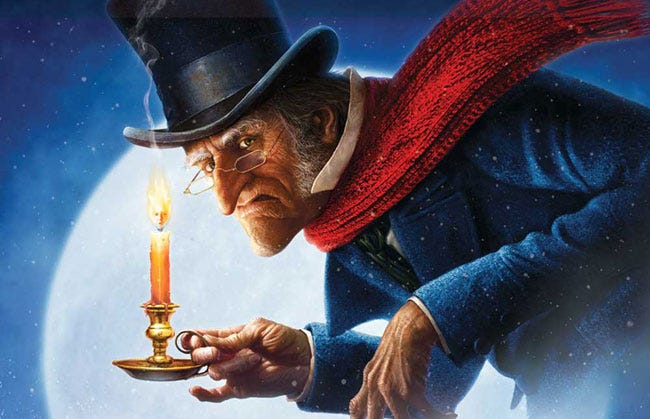
'A Christmas Carol’ is entertainment that delivers profound emotions-Photo: Via medium.com
This was the caption of an article in the Telegraph (Monday 23 December 2013) on Charles Dickens’s “A Christmas Carol”. The author, Simon Callow, eloquently describes Dickens’s genius to show how compassion that begins on one day can last all year round.
I enjoyed reading this article very much and wish to share the gist of it with you.
‘It’s Christmas 2013, and Dickens, who died in 1870, is, as usual at this time of year, everywhere; above all, of course, in his little book, A Christmas Carol, which appeared 170 years ago, in 1843. Neither Christmas nor Dickens, it appears, is showing the slightest sign of the demise so widely predicted for both of them. In fact, each reinforces the other. The story is somehow quintessential Dickens. “The mystery of Christmas,” said the Catholic polemicist G K Chesterton, “is in a manner identical to the mystery of Dickens.”
‘Far from being intended as a celebration of jollity and plenty, the book had its starting point in towering anger: like many people, he had been outraged by what he read in the 1842 Parliamentary Report on “The Employment and Condition of Children in Mines and Manufactories”, with its harrowing illustrations of children – starving, pneumoconiosis-ridden – condemned to work underground for 10 hours at a time. He determined to deliver what he called a “sledge-hammer blow” on their behalf.
‘He thought first in terms of a pamphlet, which he intended to call “An appeal to the people of England, on behalf of the poor man’s child.” He pondered it long and hard, but it was when he was in Manchester, addressing the Athenaeum Institute, an organisation devoted to the education of working men and women, on the subject of ignorance that the story of A Christmas Carol came to him, and he realised what form his sledge-hammer blow would take.
“My own heart dies within me,” he said in the speech in Manchester, “when I see thousands of immortal creatures condemned without alternative or choice, not to what our great poet calls 'the primrose path to the everlasting bonfire’, but one of jagged flints and stones, laid down by brutal ignorance”.
‘And it is Ignorance and its constant companion Want that are at the centre of A Christmas Carol, making their appearance as Scrooge parts company with the Ghost of Christmas Present, before his terrifying encounter with the Ghost of Christmas Yet To Come.
‘In the end, this is Dickens’s story: someone who sees value only in monetary terms joins the human race again, understanding that money is only meaningful insofar as it can contribute to the general good. Dickens’s sublime notion of attaching this story to the idea of Christmas is what in the end has made it a story for all time: Scrooge’s affable nephew Fred neatly makes the point to his life-hating uncle early on. “Out upon merry Christmas! What’s Christmas time to you but a time for paying bills without money; a time for finding yourself a year older, and not an hour richer?” says Scrooge indignantly. (emphasis added)
‘I have always thought of Christmas time,” says Fred, “as the only time I know of, in the long calendar of the year, when men and women seem by one consent to open their shut-up hearts freely, and to think of people below them as if they really were fellow-passengers to the grave, and not another race of creatures bound on other journeys.” (emphasis added)
‘If we can manage it at Christmas, asks Dickens, why can’t we manage it all the year round? “I will honour Christmas in my heart, and try to keep it all the year.” But first Scrooge has to learn to understand what Christmas is. The first time he says “Merry Christmas” to a fellow human being is an emotional high point in the story. And that, perhaps, in the end, is what Dickens achieved in A Christmas Carol: he made Merry Christmas mean something. If we let it.’ (emphasis added)
Read the full article HERE
See also:
Christmas Message Holds True: A life so lived is to seek together the essence of the common good
